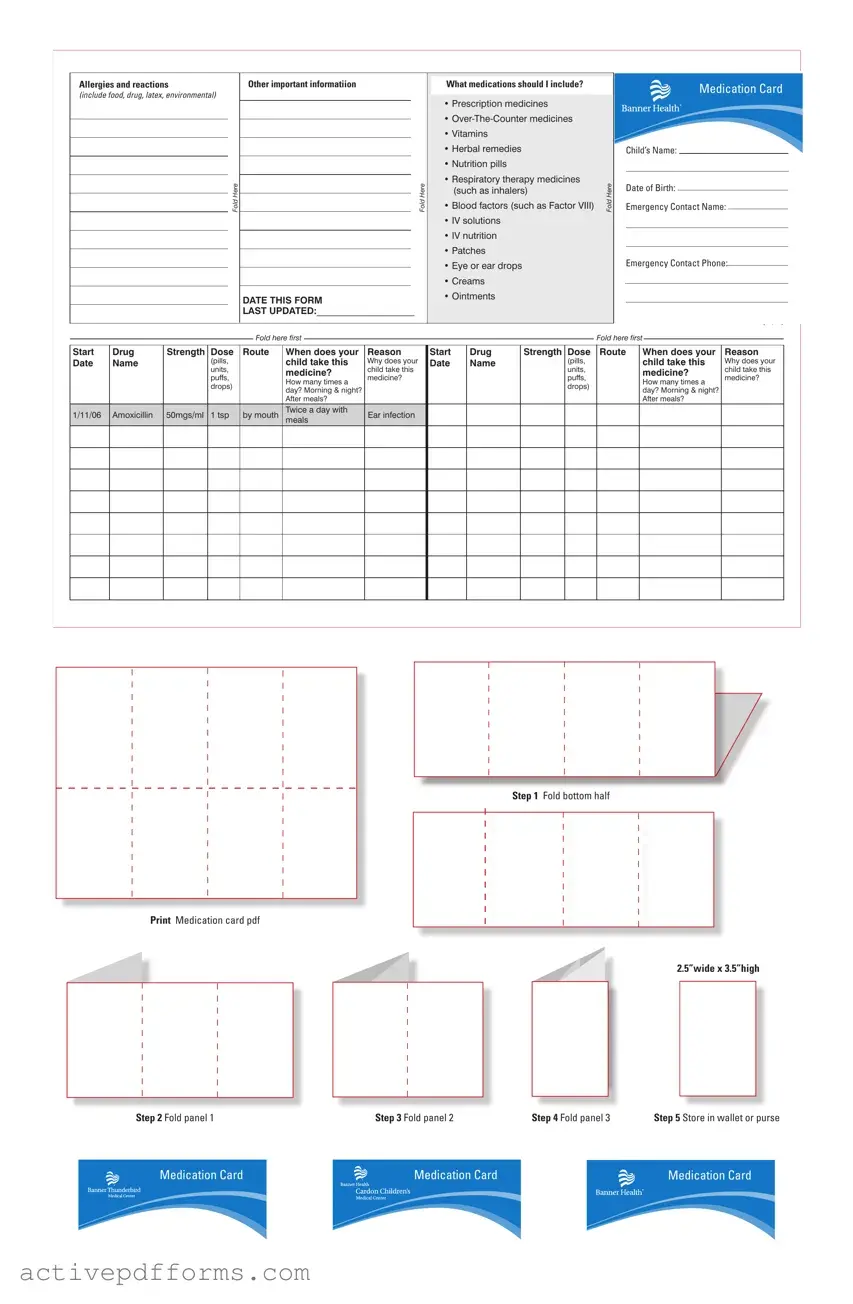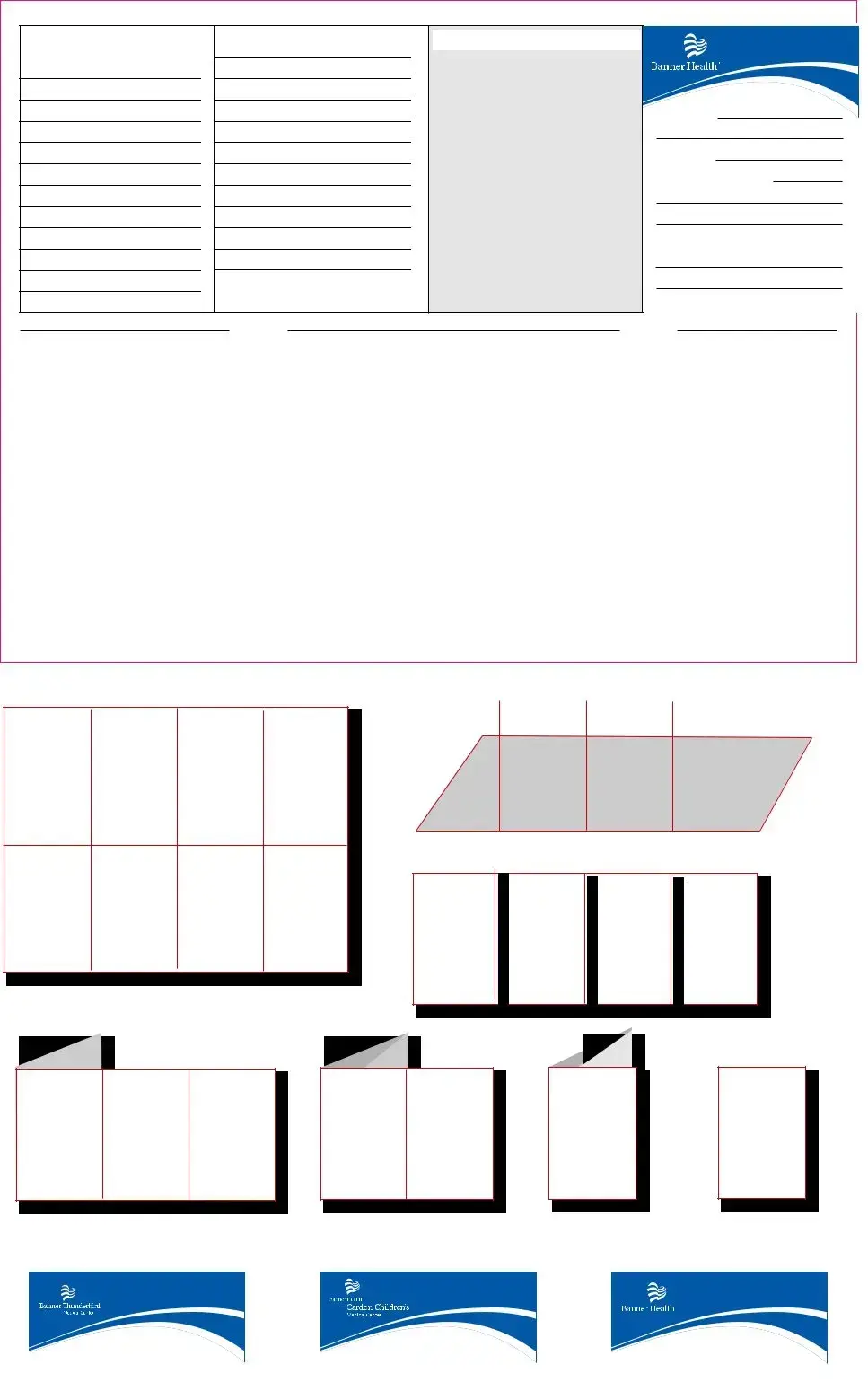In today's fast-paced and health-conscious world, being prepared for unexpected health emergencies is more important than ever. One critical tool in this preparation is the Medication List For Wallet form, a compact yet comprehensive way to keep crucial medication information close at hand. This form is ingeniously designed to fold neatly into a wallet or purse, making it effortlessly accessible in any situation. It meticulously details not only the medications one is taking, including prescription medicines, over-the-counter drugs, vitamins, herbal remedies, and more, but also any allergies and reactions one might have, from food to drugs, latex, and environmental allergens. The form encourages individuals to update it regularly, keeping track of all medication changes. Whether it's noting the strength and dose of medications or the reason and frequency they're taken, this form offers a straightforward yet detailed method for managing and communicating one's health information. It even includes emergency contact details, ensuring that in any crisis, responders have immediate access to vital data. Such attention to detail in the Medication List For Wallet form exemplifies its utility and necessity, underscoring its role as a lifesaver in the truest sense.


